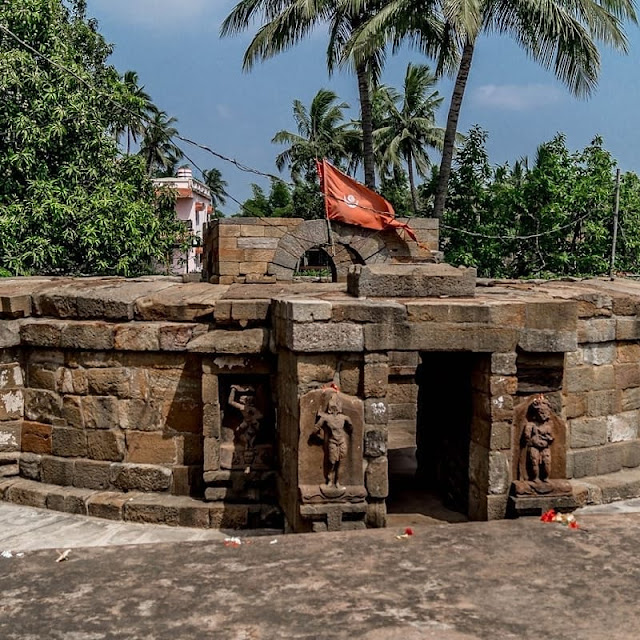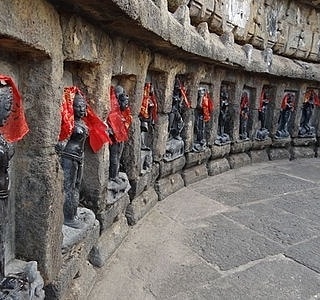The Chausath Yogini Temple of Hirapur is 20 km outside Bhubaneswar, Odisha state of India. Hirapur Yogini temple is considered to be the most famous among the Yogini temples of Odisha and Madhya Pradesh.
It is the 8th century temple of the 64 Yoginis. There are just 54 statues in the circular fashioned open air temple which doesn't have a roof like the usual kalingan style of architecture seen across the state. In the centre, is a Chandi Mandapa that has the remaining eight goddesses on all four sides. Thus, the Hirapur Chausath Yogini temple, has only statues of 62 Yoginis instead of 64.
Small alcoves are built into the niches on the low wall, each holding a strange-looking deity. Female figures carved in black chlorite with unusual features and shapes. They stand on animal and human vahans, with two or four hands. On the hands of some of the figures are unusual emblems. Animal and human faces can be seen on some of the shapes. Some of the goddesses appear to be benign, but closer inspection reveals sharply cut fangs protruding from the corners of smiling lips on many of them.
The idols express everything from rage, sadness, pleasure, joy, desire and happiness. The locals don't talk much about the trantric secrets of the place. The fear of Yoginis goes back all the way to ancient times. The Brahmanda Purana, one of the 18 major Puranas details facts about the cult of Tantra sadhana, it states that anyone who reveals the secrets of the purana will be cursed by the Yoginis.
The temple is assumed to have been built in the 9th century by Queen Hiradevi of the Bramha dynasty. Kalapahad, a 16th-century Muslim general who converted to Islam, is said to have invaded this temple and destroyed the Murtis.



Post a Comment